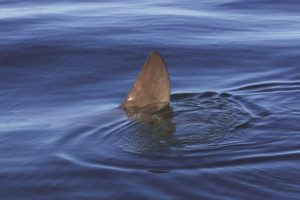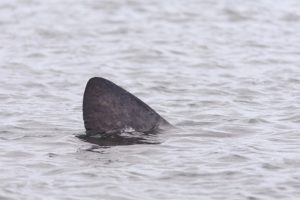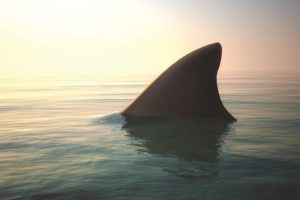We’re getting closer to our local waters being invaded by striped bass. An abundance of 20-to-24-inch bass have been in and around the Race, being caught on SP Swimmers, yellow Bombers, and cut bait. There are also a lot of mackerel and herring in the bay, and also in our harbor at the Horseshoe Cove. Squid are moving in as well in big numbers, so the food sources are clearly in great shape right now for the usual predators to come and eat.

Still waiting for reports on flounder and tautog. But it certainly looks like a robust charter fishing season on the horizon, as captains are reporting lots of phone inquiries about fishing and whale watching trips. With the pandemic waning, people are ready to enjoy the outdoors.
With summer soon upon us, the seals and great white sharks will also be arriving. In light of the high number of false shark sightings reported last year, it is time to go over the three most common fins we see in our waters and explain their distinct differences.
We have three animals whose dorsal fins regularly break the surface of the water around here: the basking shark; the ocean sunfish, a.k.a. mola mola; and, of course, the great white shark.

The basking shark feeds on plankton, so it poses no threat to humans whatsoever — unless it physically runs into you. Its dorsal fin, although somewhat similar to the great white’s, has a very rounded-off apex, as opposed to the great white shark’s, which has a sharply pointed apex. The gill plates on the basking shark are also much larger and conspicuous than the great white’s. The basking shark’s gray-black coloration is fairly consistent top to bottom, while the great white is uniformly gray on its upper side, transitioning to white on its bottom side.
The ocean sunfish or mola mola also has a triangular dorsal fin, which often breaks the surface of the water. Its dorsal fin, however, is very floppy. Observing an ocean sunfish from afar, you will notice the fin flop from side to side as it rides the currents.

The great white cruises through the water at a higher speed than either the basking shark or sunfish, and its fin, with a higher amount of cartilage, remains stiff and perpendicular to the water.
Whale watching is very good right now, with right whales shifting north and slightly west on their migratory path. On May 7, the Center for Coastal Studies aerial surveillance team detected 34 right whales in Massachusetts coastal waters, including six mother-calf pairs. This is down quite a bit from the 160 whales observed the previous week. Humpback whales and fin whales, however, are moving into the bay and down the backside beaches, feeding on the enormous number of herring and mackerel currently in our waters.



